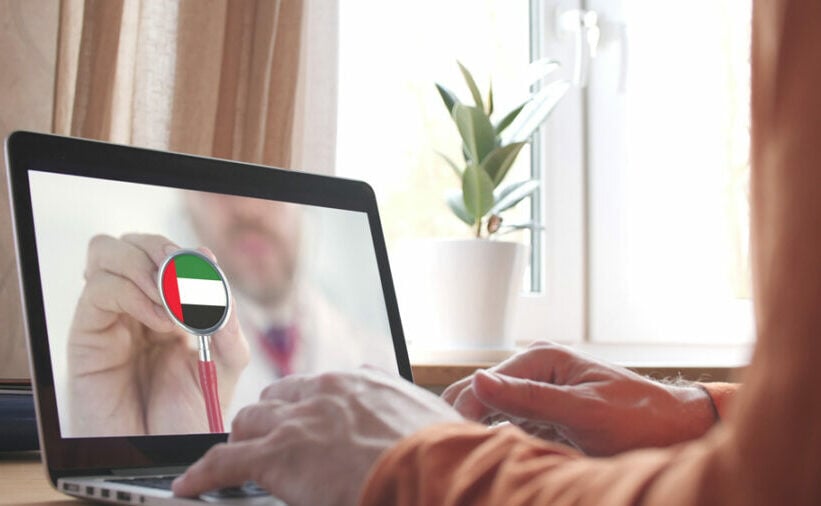Telehealth, defined as the delivery of health-related services via telecommunications, has never expanded as exponentially as it has in the past 18 months, specifically since the onset of the pandemic.
The obvious reason for that has been the restrictive lockdowns imposed by the governments which forced both patients and care providers to turn to technologies such as video and audio meeting apps, smartphone apps, digital photography, remote patient monitoring (RPM), and store and forward technologies.
As the world inched closer to virtual integration, it is safe to say that telehealth exploded into the healthcare scene both globally and regionally. In April 2020 in the US, overall telehealth utilization for office visits and outpatient care was 78 times higher than in February that same year, a Mckinsey report found. This figure is easily explained by the pandemic.
As of July 2021, telehealth utilization has stabilized at levels 38 times higher than before the pandemic.
Closer to home in the GCC region, the rising digitalization of healthcare services along with the increasing adoption of remote patient monitoring solutions is spurring demand for telehealth. According to covid data released by the UAE division of the international telehealth provider, vHealth, the company witnessed a 500% increase in the use of its telehealth app between the months of March and September 2020, compared to the same period in 2019.
This change, borne out of necessity, was enabled by increased consumer willingness to use telehealth, increased provider willingness to use telehealth, and regulatory changes enabling greater access and reimbursement, especially in the UAE.
As one can predict, there are many players in the telehealth industry whose mission is to facilitate the healthcare process, whether it’s through documenting the screening process or connecting the patient and the healthcare service provider.
Okadoc
One example of such a one-stop-shop service that has been making the news for a while is Okadoc. Okadoc is an instant doctor platform that is directly integrated with the healthcare providers’ electronic medical records (EMR). It offers patients a number of features, such as viewing real-time doctor availability, instantly booking appointments, receiving reminders, sharing documents, processing payments online, rescheduling, canceling, and requesting reminders for earlier availability.
Okadoc’s application went live in April 2021 across 28 facilities, including more than 1,000 bookable doctors and 500 telehealth providers. By November, appointments booked via the application grew to nearly 23,000 bookings per month. With more than 75,000 video consultations, Okadoc boarded over 1,000 telehealth doctors, with the top 10 specialties being obstetrics and gynecology, followed by pediatrics, family and general medicine, dermatology, orthopedics, internal medicine, ENT, ophthalmology, diabetes, and cardiology.
Recently, the startup has been eyeing Saudi Arabia for its expansion plans and has appointed Rafat Taher as its new Saudi-based CEO. Taher spoke to EME saying, “our expansion strategy is simple: identify markets where we can significantly impact the healthcare system. Currently, we operate in the UAE, Saudi, and Indonesia and are working on adding another country to that list. If all goes to plan, we should have a major announcement soon.”
The single largest challenge to expanding geographically has been making the platform compliant with different regulations, adds Taher. Okadoc is fully compliant with both the UAE and Saudi’s data residency laws. They claim they will soon be the first and only health tech company in the region to reach ISO 27001 certification – a seal of approval that certifies that they operate in accordance with the international standards developed and published by the International Organization for Standardization (ISO).
Another challenge to their expansion was convincing stakeholders that digitalizing the healthcare experience was a viable business solution. Luckily, the arrival of the pandemic greatly sped up this process, as many realized that telehealth was a must-have to stay in business.
Santechture
Another telehealth solution that has just launched into the GCC market is Santechture.
Santechture is an AI-driven healthcare fintech solution that optimizes the revenues of the healthcare providers by eliminating universal pain points such as manual administration, inaccurate documentation, inadequate financial tracking, and costly in-house billing processes.
Other solutions that are sprouting in this burgeoning sector include, but are not limited to, the “Doctor for Every Citizen” service which was launched by the Dubai Health Authority (DHA) back in December 2019 (before the pandemic).
As Forbes predicted, it looks like telehealth is here to stay. The sector has witnessed an unprecedented growth rate with a market cap of three-quarters of a trillion dollars. If that isn’t enough to convince investors to pitch in, we don’t know what is.









